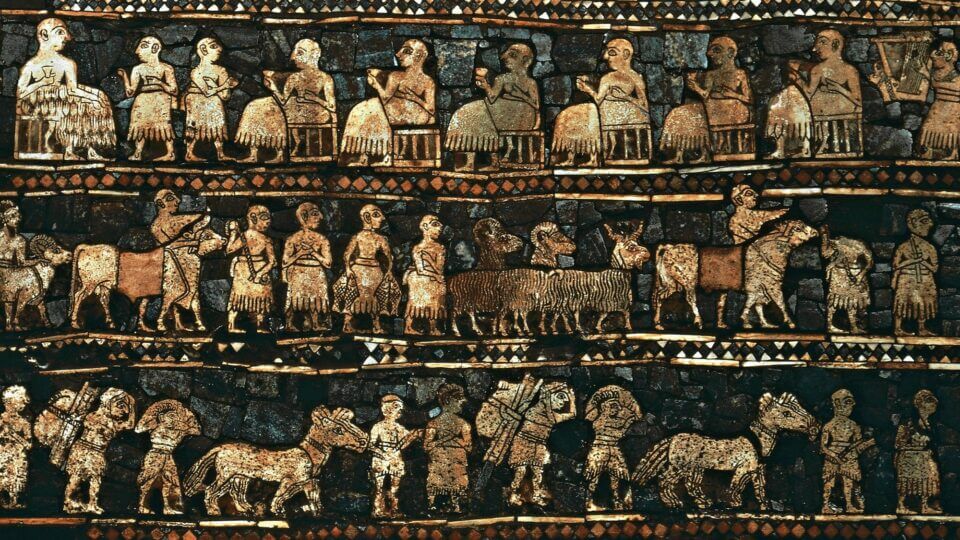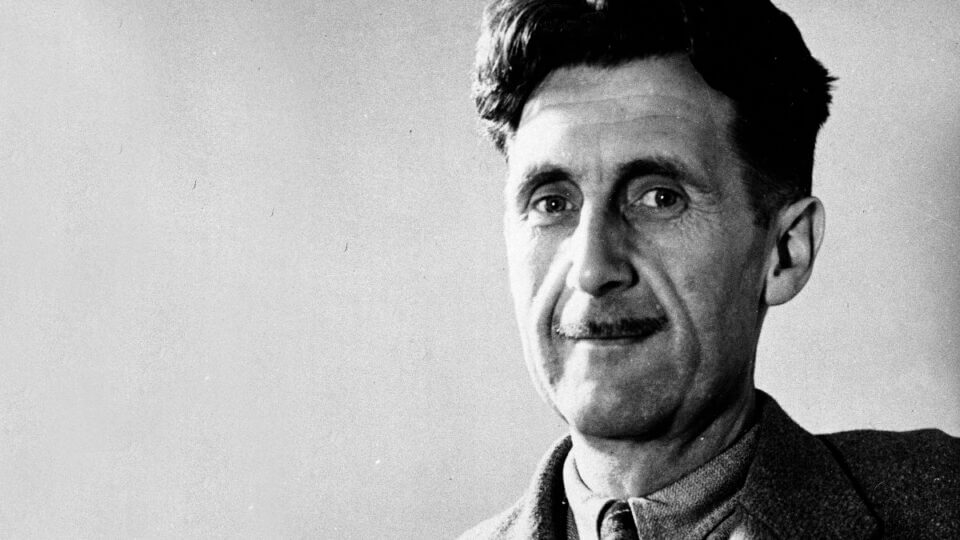
“Williamson puts his finger on a certain, pervasive resignation that hobbles so many lower-class Americans—a resignation that must be explicitly attacked if our nation is to live up to its promises…”
There are certain writers tuned in to American politics and culture who have earned the right to be heard or, rather, read. Thanks to the power of their prose and the acuity of their analysis, I have a hard time ever scrolling past their articles. Ross Douthat and David Brooks at The New York Times; Ezra Klein and Matt Yglesias (formerly at Vox, now at The New York Times and Slow Boring, respectively); Jonah Goldberg and David French at The Dispatch; and Kevin Williamson at National Review come to mind.
In his recent book Big White Ghetto: Dead Broke, Stone-Cold Stupid, and High on Rage in the Dank Woolly Wilds of the “Real America,” Williamson is peak Williamson, reminding readers of why he is always a must-read. There is the wit, the irony, and the sharp analysis. These are the qualities of his writing that readers of his “The Tuesday” newsletter are quite familiar with by now.
A collection of some of his previously reported National Review pieces from over the past decade, Big White Ghetto presents readers with a deluge of social maladies. Williamson introduces us to heroin addicts in Alabama, opioid addicts, and welfare fraudsters in eastern Kentucky, pornography devotees in Las Vegas, down-on-life gambling addicts in Atlantic City, and homeless encampment residents in Austin, Texas.
These are diverse, different places filled with diverse, different people. The unifying thread that ties these hapless Americans together is their sense of helplessness and their seeming lack of awareness that there are other, more success-prone ways of living one’s life.
Moreover, they are tragically unaware (or, at least, not especially aware) of the existence of a less troubled world, a world less dominated by dysfunction, a world beyond the ghetto.
The inhabitants of the big white ghetto—those residing in these myriad pockets of dysfunction throughout the United States—have a constricted view of the world, as well as their places and possibilities within it. These Americans are not merely poor in the material sense; their very sense of themselves—of their agency, of their capacity to succeed and move beyond their ghettoized reality—is impoverished. Moreover, they are tragically unaware (or, at least, not especially aware) of the existence of a less troubled world, a world less dominated by dysfunction, a world beyond the ghetto. Too many are resigned to the reality of the ghetto, no matter its hue, and their place within it. Williamson puts his finger on a certain, pervasive resignation that hobbles so many lower-class Americans—a resignation that must be explicitly attacked if our nation is to live up to its promises of individual empowerment, economic dynamism, and upward mobility.
Williamson is adamantly not offering policy solutions to poverty in America. However, by taking a long, hard, clear-eyed look at some of America’s most down-trodden communities and the constricted worldviews and weakened sense of agency that defines them, he has pointed a way towards certain, reasonable policy responses.
Williamson’s most compelling chapters center on Lubbock, Texas, his hometown. In relating the story of his dysfunctional upbringing—his alcoholic stepfather, his brief periods of quasi-homelessness during childhood as he bounced around from neighbor’s couch to neighbor’s couch—he wades into an argument with his National Review colleague Michael Brendan Dougherty.
Riffing off of the nationalist, populist energies that have been ascendant on the Right, Dougherty has laid much of the blame for the social alienation and economic decline that grips the big white ghetto at the feet establishment conservatism. The struggling town of Garbutt, New York, functions as Dougherty’s prototype—a once bustling town dependent on the gypsum industry that has since been hollowed out. Both Dougherty’s Garbutt and Williamson’s Lubbock are home to “a lot of what’s killing the poor white people: prescription-drug addiction and the heroin that follows on its coattails, meth, alcohol abuse, venereal disease, and so on.”
What is curious, though, is that the pathologies of Garbutt and Lubbock have been present for a long while. As Williamson writes, these are not communities that are reeling in the wake of the recent closure of an all-important, jobs-producing factory or plant. No:
“Nothing happened. There wasn’t some awful disaster. There wasn’t a war or a famine or a plague or a foreign occupation. Even the economic changes of the past few decades do very little to explain the dysfunction and negligence—and the absolute incomprehensible malice—of poor white America.”
Indeed, the gypsum industry vacated the Garbutt premises in the early 20th century—bout 100 years ago. So, when we are talking about a place that has been down on its luck for, shall we say, quite some time, Williamson seems to have the upper hand: “What, really, is the case for staying in Garbutt?”—or in just about any of the places that Williamson surveys, for that matter? When a town fails, and the inevitable economic and social decline takes hold, should we focus our lament and policy energies on the town or on its human inhabitants?
By depicting how bad habits beget bad habits, how poverty begets poverty, how social pathologies beget social pathologies, Williamson is nudging policy makers towards siding with the people over the town. That is not to say that the people are not somewhat responsible for their condition. Having come from a troubled background, Williamson does not sugarcoat the fact that laziness and other personal failings are indeed major hindrances holding many inhabitants of the big white ghetto back. Siding with the people over the town does not mean negating the reality of human agency; it simply means reckoning with the possibility that the best way to serve the people is to induce them to leave the town—and all of the pathologies it houses.
Perhaps we should quit lumping struggling people with bad luck and bad habits together and then trying to make their lives a bit more livable via various welfare programs. As Williamson writes: “The people would be better off dispersed than forced together in self-reinforcing misery and dysfunction.” Maybe we should quit the “cheap sentimentality,” as Williamson aptly calls it, regarding the economic and social flailing of the big white ghetto and quit applying salves to long festering wounds.
The human connection to place is real, of course, and policies must honor that connection—but only to a certain extent. A benign love of community can be overshadowed by the pathologies of that community. Certain communities are no longer enriching the lives of community members and have no chance of doing so. When they reach that point, public policy should be nudging said members out.
Many of the most productive, ambitious community members have already nudged themselves out. As Williamson writes:
“Like its black urban counterparts, the Big White Ghetto suffers from a whole trainload of social problems, but the most significant among them may be adverse selection: Those who have native enterprising grit to do so get the hell out as fast as they can, and they have been doing that for decades. As they go businesses disappear, institutions fall into decline, social networks erode, and there is little or nothing left over for those who remain. It’s a classic economic death spiral: The quality of the available jobs is not enough to keep good workers, and the quality of the available workers is not enough to attract good jobs…The employed and the upwardly mobile leave, taking their children, their capital, and their habits with them, clear of the Big White Ghetto, while the unemployed, the dependent, and the addicted are once again left behind.”
Those left behind riff off one another’s bad habits—a bad situation is made worse. That is why Williamson is absolutely correct to write that, more often than not, “The best public policy treatment we have for poverty is dilution.”
Widen people’s worlds. Get them out of hopeless environs. Confront them, each and every day, with examples of success.
When we place the self-reinforcing nature of calamity and poverty within the big white ghetto at the very center of our understanding of what ails its inhabitants, we begin to see both the similarities and major differences between the communities about which Williamson writes and the typical low-income, black and brown “ghettos” of urban America. (Note that Williamson includes two very worthwhile chapters on Chicago’s drug scene and Philadelphia’s many woes and problematic political culture in the book as well.)
But at a certain point, there is only so much that public policy can do.
The geographic isolation of the communities that comprise the (often rural) big white ghetto—the fact that they are so very far from more successful locales—might be the most relevant differentiator between them and their inner-city, non-white, low-income counterparts in the age of urban gentrification. For those in the inner-city ghetto, opportunity, wealth, and success are often concentrated mere blocks away. In Philadelphia, for example, low-income West Philly and gentrified University City are quite close, but they might as well be worlds away. Policy makers should think more critically about how to thread the needle: how to encourage the spread of gentrification while also empowering the original, struggling residents to keep hold of their homes and apartments in those once struggling but now gentrifying neighborhoods.
Depending on the situation, dilution need not entail dispersal.
Public policy should nudge those struggling in the big white ghetto out of the big white ghetto—by tying re-location subsidies to welfare payments, for example. When it comes to low-income, high-crime, urban communities that are at the edge of neighborhood gentrification, however, the policy stance should be the exact opposite. Policies should actively try to prevent gentrification-induced displacement; policies should be trying to help these citizens stay put.
Whatever the precise policy technique may be, though, the through line here is the focus on individual empowerment via environmental shaping: Either get people out of the poverty-inducing, pathology-exacerbating environments and into better ones, or harness the power of market forces (like gentrification) that are improving those environs.
Either way, public policy must reckon with the troubling realities Williamson relates in Big White Ghetto. Welfare has its place. So too does marriage. As does education. But at a certain point, there is only so much that public policy can do. It must do what it can, but in a free society such as ours, the onus will always remain on the individual.
When it comes to poverty, perhaps the most effective, inexpensive step policy makers can take is nudging the individual out of environments that are destructive or helping him or her stay within an environment that is improving.
Public policy makers’ mantra should be simple and straightforward, rooted in reason and compassion: If the ghetto is not gentrifying, get out.
Thomas Koenig is a recent graduate of Princeton University and will be attending Harvard Law School in the fall of 2021. He can be found on Twitter @TomsTakes98










